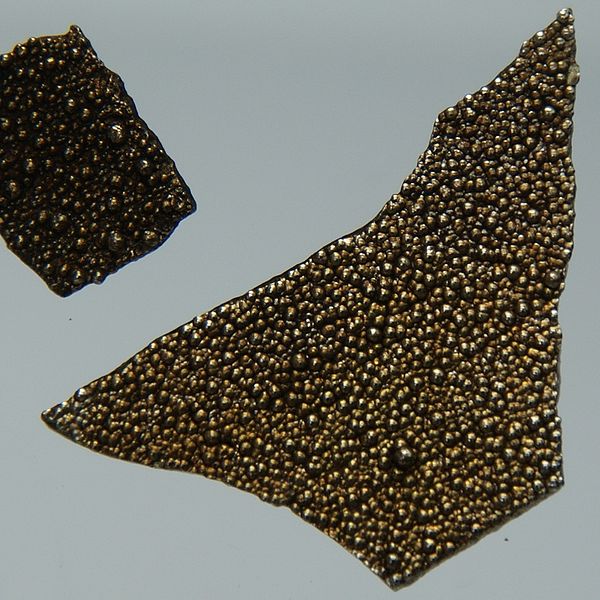Manganese

Manganese
Image by Jurii - source Wikpedia - This image file is licensed under the Creative Commons Attribution 3.0 Unported license.
Manganese - overview
Manganese, element no. 25 in the periodic table, is an important metal in industry. It resembles iron and is sometimes found in combination with iron in nature. Manganese is also a required trace mineral for living organisms. [1]
The use of Manganese has a long history. In the stone age manganese oxides were used as pigments and have been found in cave paintings 24-30,000 years old. [1] It was used by Egyptian and Roman glassmakers and its use as "glassmakers soap" continued to modern times. [1]
In the 19th century it was discovered that adding manganese to steel made it harder. In 1866 the Leclanche cell was invented - a type of battery that used manganese dioxide. The use of manganese dioxide in batteries was the standard for commercially available alkaline batteries in the 20th century. [1]
Manganese Resources and Production
Manganese is the 12th most abundant element in the earth's crust. It occurs in several minerals, including pyrolusite, braunite, psilomelane, and to a lesser extent as rhodochrosite. Of these, the most economically significant is pyrolusite. Most of the world's manganese resources are in South Africa (around 80%), however there are also significant deposits in Ukraine, Australia, China Brazil, Gabon, India, Ghana and Kazakhstan. [1]
Manganese Uses
85-90% of the Manganese used in the USA in 2007 went towards steelmaking. It is anticipated that future used of manganese will closely follow trends in steel production. [2] 24% of the manganese used goes towards "I-beams" - steel bars used in construction. [3] [4]
Manganese is also used in aluminium alloys to increase corrosion resistance - and this is the second largest use of manganese. Most beverage cans are made from aluminium alloys with a content of between 0.8% and 1.5% manganese. [1]
Manganese is used in alkaline batteries - in 2002, over 230,000 tons of manganese dioxide went towards battery manufacture. [1]
Manganese (in the form of methylcyclopentadienyl manganese tricarbonyl / MMT) has been used as a gasoline additive. It is controversial and health hazards associated with this use are debated. [1] [5]
Manganese is also used in plant fertilizers, animal feed and as a brick colorant. [6]
According to the USGS, in 2007 the leading producers manganese ore were South Africa (21%), Australia (20%), China (16%), Gabon (12%), and Brazil (7%). [2] The greatest Manganese reserves are in South Africa - with around 80% of the world's identified resources. [5]
Though a large amount of manganese exists compared to some other critical metals, it is considered a highly critical metal because there is no viable substitute in its major applications. [5]
Manganese Facts
| Name | Manganese |
| Symbol | Mn |
| Atomic Number | 25 |
| Melting point (Celsius) | 1246ºC |
| Density | 7.47 g/cc |
| Hardness (Moh) | 6.0 |
| Resistivity (nanoOhms / meter at 20ºCelsius) | 1440 |
Manganese References:
[1] http://en.wikipedia.org/wiki/Manganese
[2] http://minerals.usgs.gov/minerals/pubs/commodity/manganese/myb1-2007-manga.pdf
[3] http://www.mineralszone.com/minerals/manganese.html
[4] http://en.wikipedia.org/wiki/I_beam
[5] http://en.wikipedia.org/wiki/Methylcyclopentadienyl_manganese_tricarbonyl
[6] http://minerals.usgs.gov/minerals/pubs/commodity/manganese/mcs-2010-manga.pdf

This website is not investment advice or a recommendation to buy or sell.


